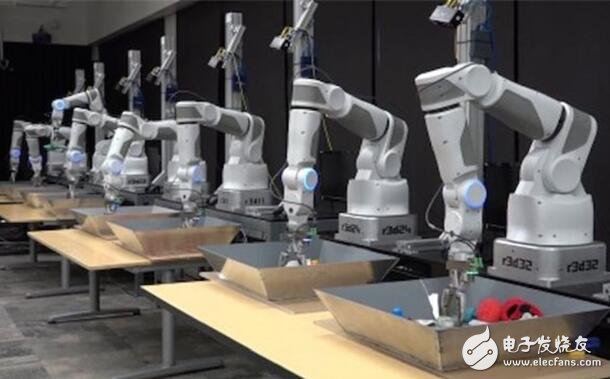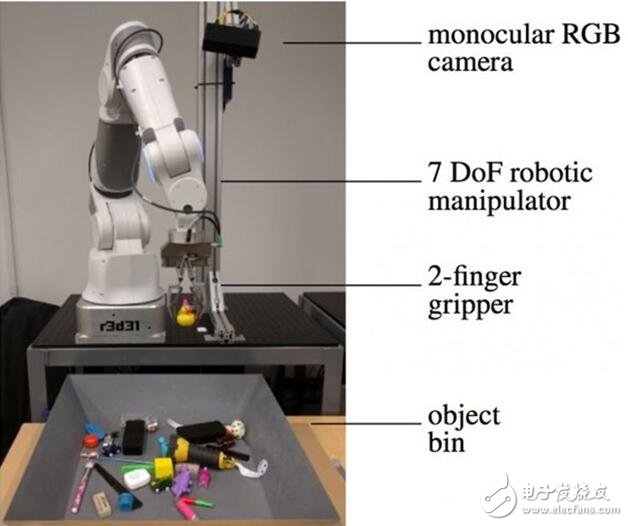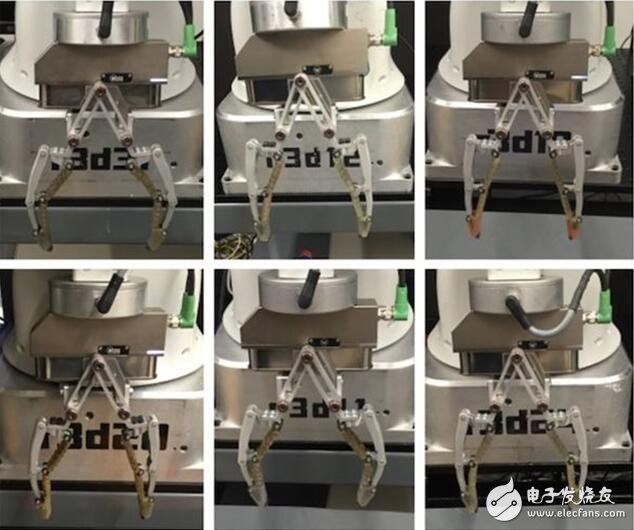“There were 240,000 robotic arm markets in the world last year, of which only 3% of the human-machine cooperation arms were used. Because the dedicated robots can only be used for a single operation, human-machine collaboration can be used to prepare the actuators according to industry and work requirements. And the transformation of the front end of the fixture, the future man-machine cooperation robot arm will be much more demanding than the dedicated robot." This is the data given by Daming Robot Chief Operating Officer Huang Zhizhong in an interview with the media.
From this point of view, the prospect of the robot arm is still very impressive. However, on the morning of October 11, Bloomberg quoted sources as saying that Google’s parent company, Alphabet, had abandoned the plan to launch the robotic arm because these products failed to pass the Alphabet CEO. Larry Page's "toothbrush test." Page requires that Alphabet's products must be used by billions of people every day.
Meet the Google robotic arm that has never been available
At Google Research, more than a dozen robotic arms are picking up different items for months, heavy, light, flat, large, small, hard, soft, and translucent (though not at the same time ). Researchers tell us why their methods are unique and why 800,000 catches are just the beginning.

Why animals grab objects is completely okay, in part because of the eyes, not just the hands. You can grab an item with your eyes closed, but if you can see the interaction between the hand and the item, you will be much better. In the field of robotics, this is called visual servoing, in addition to increasing the degree of gripping, and allowing the robot to grab items that are moving or changing direction.
It's not easy to teach robots because there is no inevitable connection between sensor information and actions, especially when you have always had countless sensory input (just like people in the visual system). The smart way is not to fill the duck-style teaching, but to let the robot self-study. At Google Research, a group of researchers, with the help of a Google X colleague, let a 7-DoF robotic arm grab a messy item, using monocular visual servoing and deep convolutional neural networks (CNN) to predict the results of the capture. Convolutional neural networks continue to train themselves, failing to fall, and then getting better. In order to speed up the process, Google has put 14 robots into operation at the same time. This is completely automatic: people just need to put something on the plate and turn on the power switch.

A robot in a data collection experiment. Each unit consists of a seven-degree-of-freedom arm, a grabber with two fingers, and a camera that looks down from the shoulder of the robot. Researchers say the camera records monocular RGB and depth images, but only monocular RGB images are used to predict successful capture.
When 14 robots work at the same time, information gathering is much faster, but at the same time, many unplanned variables are introduced into the experiment. The position of the camera is slightly different, lighting is not the same for every robot, and each standard gripper has different types of wear, affecting performance.

The gripper of the robot after the test. Researchers say that robots "have experienced varying degrees of wear and tear, resulting in important changes in appearance and geometry."
On the positive side, robots can better handle problems with similar hardware nuances and camera calibration differences, making crawling more powerful. Even so, this approach can't be overstated and can't be used in very different hardware and crawling environments (such as taking an item from a shelf). Researchers plan to try to make training more diverse in the future and see how adaptable their technology is. They also want to study how to apply this method to "real world" robots, "in very complex environments, objects, lighting and wear."
Slowly, they become more adept at picking up items and automatically adapting themselves to new tasks without having to enter new programs. As a result, the sensory motor skills gap between robots and humans has further narrowed.
Why did you decide not to introduce a robotic arm?
The reason for this is not only because it failed to pass the test of brushing teeth. At first Google's robotics team had built these robotic arms and wanted to sell them to manufacturers, warehouse operators and other customers.
James Kuffner, CEO of Toyota Research and former head of the Google Robotics team, said: "Although it is a prototype, it has many advantages. Google's robotics team works very hard if I do it. Decided, I will choose to bring it to market, but Google did not do that."
1. Google did not sell robots.
Google spokesman Jason Freidenfelds said Google has no plans to sell these robotic arms. He said: "We are using them to do some basic research, such as how machine learning can help robots strengthen collaboration. This is a very promising field of research, but still in its infancy." Courtney Research Lab X spokeswoman Courtney · Courtney Hohne declined to comment.
2, Google's robotics department has no leader
These robotic arms were designed by MekaRoboTIcs, a startup acquired by Google in 2013. Insiders in the robotics department are working hard to push the robotic arm to market and sell it at relatively low prices, thereby weakening other competitors in the market.
Deciding not to sell the robotic arm is another sign that Google’s robots have no trouble in the robotics department. Former Android executive Andy Rubin has launched a massive acquisition boom in Google, and a series of startups were included in the Google Robotics division in 2013. When Rubin left in the second year, Google merged the robotics team into X Labs to develop robots. At the beginning of 2016, Google was interested in selling its largest robotics team, BostonDynamics, but it has not found a buyer until now.
At the same time, the decision to stop the robotic arm project also made the robotics experts involved in the project very disappointed with Google's cautiousness. This sentiment also spread in other departments outside of Google's core Internet business, such as the driverless car team, they have already shown Out of technical strength, but still did not launch any products.
3. Consider better brand protection
The frustration of Google’s undecided release of unrefined products is not just in the experimental department. Page often encourages Google employees to pursue “moonshot (crazy and not easy to implement) projects that are risky but often have a huge impact. But sometimes, this approach can lead to smaller but more practical products and services being shelved, or staying in the research phase for many years.
Kufner said that when Google considers releasing a product, it must protect its brand. After all, Google is one of the most valuable brands in the world. But no executives can always make the right decisions, because it's a difficult balance. On the one hand, you want to launch the product as soon as possible, and on the other hand, you have to protect the brand. (Comprehensive finishing)
Electric Meters Battery,6V Lithium Battery,Electricity Meter Battery,Lithium Battery Meter
Jiangmen Hongli Energy Co.ltd , https://www.honglienergy.com
